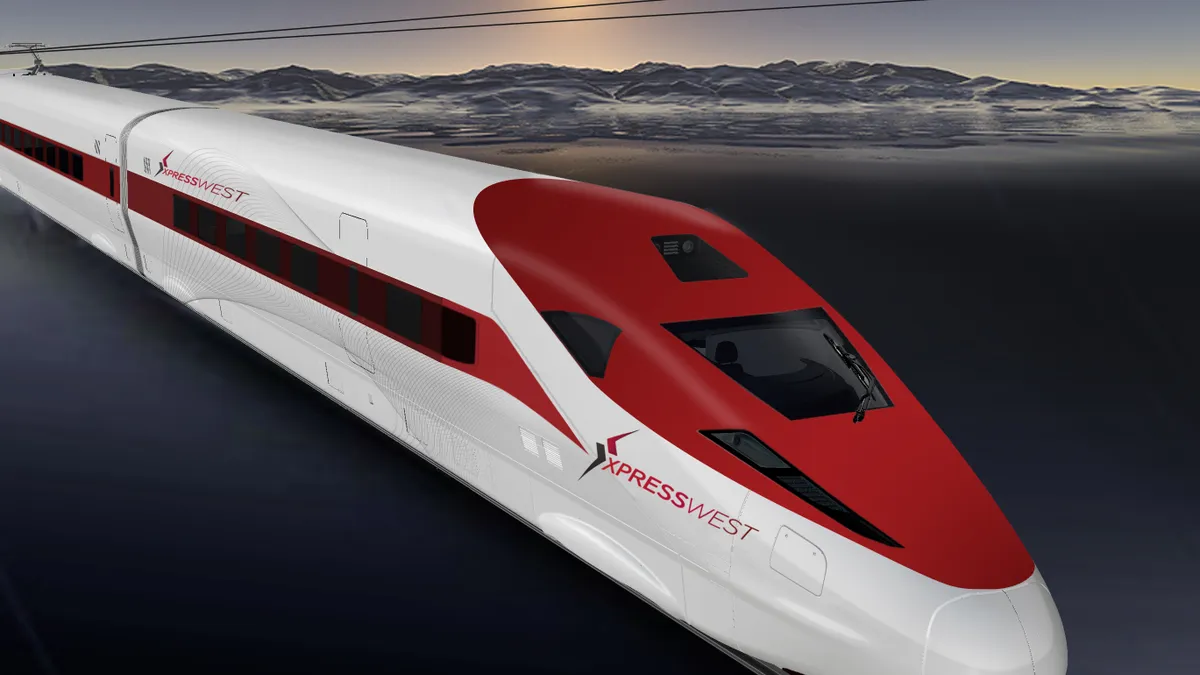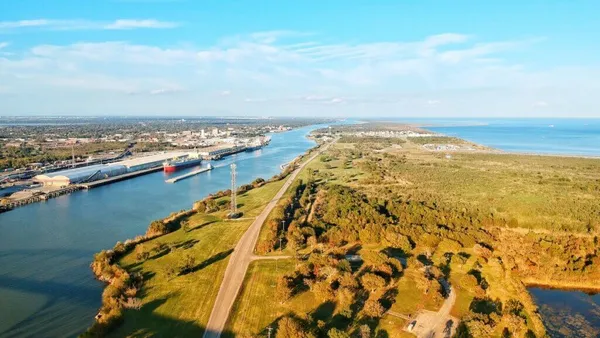Dive Brief:
- Virgin Trains USA updated its timeline for construction of the 170-mile, $4.8 billion high-speed train from Victorville, California, to Las Vegas, the Las Vegas Review-Journal reported, and said it could break ground as early as the third quarter of 2020.
- Tina Quigley, vice president of business strategy for Virgin Trains USA, told the Review-Journal that construction likely will start in five California locations first and that work in Nevada, including for the Las Vegas rail station, would not begin until mid-2021. Only 35 miles will run through Nevada, while the most up-to-date plan has the majority of the 170-mile line running between the northbound and southbound lanes of Interstate 15 in California.
- Virgin Trains cannot begin construction until it receives a record of decision from the Federal Railroad Administration (FRA), but Terry Mills, director of Nevada's Department of Business (DOB), told the Review-Journal that Virgin plans on being prepared with enough material and equipment so that it can start building as soon as the FRA gives it the green light. Virgin estimates that the entire line, which will transport passengers between Victorville and Las Vegas in 90 minutes, will be completed in 2023.
Dive Insight:
For Virgin to meet its target deadline it also needs the Nevada DOB to approve a $950 million private activity bond program in January or February. The $950 million includes $200 million from Nevada's debt limit allocation and $150 million through the U.S. Department of Transportation.
Virgin already won bond approval in California. Last month, the state's Infrastructure and Economic Development Bank authorized the issuance of $3.2 billion worth of tax-exempt, fixed-rate revenue bonds, the proceeds of which will be used for the construction of the line, which is being built under the name of Virgin affiliate DesertXpress Enterprises LLC and will operate as XpressWest.
San Bernardino County, California, is sponsoring the bonds, and the money will go toward design, development, construction, operation and maintenance once the rail line is up and running.
Quigley also told the Review-Journal that the rail's route along I-15 in California will not allow pedestrians or vehicles to get in the way of the bullet train because the line will be built over or under interchanges.
Virgin formed a partnership with Brightline earlier this year, and the South Florida high-speed trains have killed 41 people since July 2017, according to an Associated Press analysis. This gives Brightline the highest fatality rate of the 821 railroads operating in the United States. Most of the deaths have been ruled suicide, while others happened because people ignored the warning bells and crossing lights. Drugs and alcohol were found to have also played a role in the deaths.
This month, Florida DOT Secretary Kevin J. Thibault ordered the department to implement "unprecedented rail safety measures" and an education program meant to prevent deaths on or near state-road and state-owned crossings.
Thibault directed FDOT staff to:
- Implement dynamic envelopes, which are marked areas extending from both sides of the track, at more than 4,000 existing rail crossings in the state and to include them in the design of future rail crossings.
- Launch a rail-safety education initiative.
- Work with state and local law enforcement agencies to help enforce rail safety regulations.
- Continue the partnership with private rail agencies to increase safety in design and engineering.
The FDOT projects that the dynamic envelope program, which can reduce the number of vehicles stopping too close to or on rail crossings by 15%, will cost $60 million and should be complete by March 2022.













